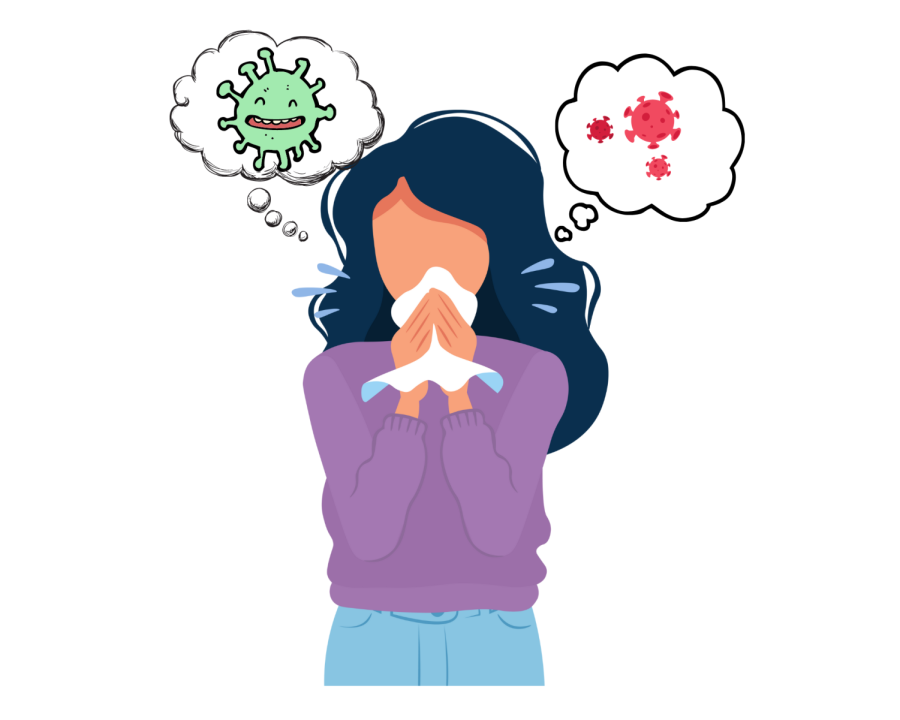This fall and winter have been plagued by the record-breaking cases of the flu and COVID-19. With a new coronavirus variant and the inefficacy of the flu vaccine, this “twindemic” seems unstoppable.
COVID-19 brought the world to a stop in 2020 and has been causing many problems since. After the vaccine rolled out in early 2021, cases have slowly started plateauing. However, new variants such as Delta and Omicron have caused mutations within the virus to make them more transmissible and resistant to the vaccines.
Symptoms of COVID-19 include fever, cough, shortness of breath, loss of smell and taste and many more. The symptoms of the flu include fever, coughs and headaches and many other similar symptoms to COVID-19. Because they are so similar to the flu symptoms, COVID-19 symptoms can be difficult to distinguish.
The flu has been around for much longer. The flu’s vaccine has been available since the 1930s. Flu vaccines are updated every year to match the predicted variation of the flu. However, the flu vaccine is not effective against this year’s strain due to the vaccine not matching the prominent strain. Although this vaccine protects against severe illness, it does not do much to prevent infection. This caused the flu cases to rise more than in a normal year.
Since both are respiratory illnesses and both have similar symptoms, the flu and COVID-19 have people worried about contracting one and assuming it is the other.
Junior Nikhil Ramaraju was worried when he showed symptoms. “I didn’t know if I contracted the flu or the coronavirus because both of them are prominent in our area right now. I got tested almost immediately and was positive for COVID,” Ramaraju shared.
The only way to tell the difference is to get tested for them. Rapid self testing kits are available to test at home and more accurate tests are available at testing centers.
Another worry about these viruses is that they are merging. The “flurona” is a combination of the coronavirus and the flu. These cases are rare but have been steadily increasing. These flurona cases have not been dangerous, but they are something researchers and scientists have been tracking.
The best way to stay safe from these viruses is to wear a mask and practice social distancing. Masks can block out many of the tiny aerosols that can contain the viruses, and social distancing can make sure the virus is not spread as easily among people.
As more people get infected by these viruses, taking these necessary precautions can help slow down these viruses and bring the world back on its feet again.









